I’ve agreed to write four articles for Popular Woodworking over the coming months, in addition to continuing work on my manuscript for The Period Finisher’s Manual for LAP which is targeted for some time in 2018. It’s probably just me but I think each of the four articles are work-life-changing; they certainly were for me.

First out of the gate will be a short article about making and using some terrific clamps for holding components of workpieces in place, especially useful in my restoration work. We haven’t even figured out a good title for these clamps just yet.
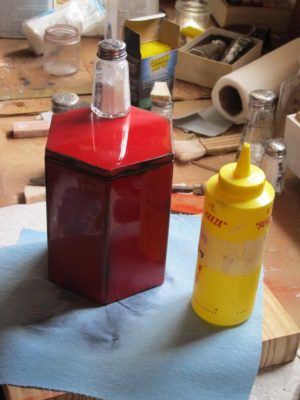
Second will be an article that I am perhaps more excited about than any I have written thus far, Faux Urushi. In it I will be chronicling my path to and my current practices for replicating this pinnacle of the finishing art, with lots of step-by-step instructions and illustrations.

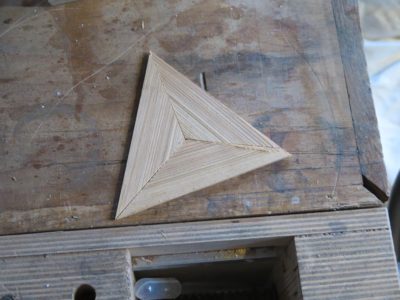
Then comes my mea culpa to the jig-makers of the woodworking world (in the past I have often just rolled my eyes as wood machinists wax ecstatic about this or that jig that allows them to use their power machines to make what could be done much more simply by hand; I was wrong to do so, and I apologize for being a churl) as I address the creation of three of Roubo’s parquetry patterns. It’s all about precisely made sawing and planing jigs.
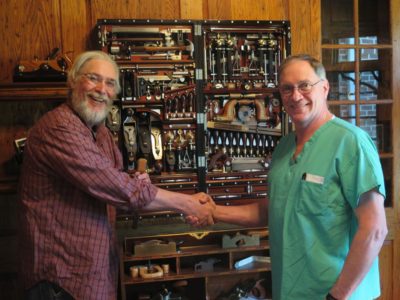
Finally this writing season will wrap up next Spring with a profile of Studley 2.0 and the remarkably accomplished artist who created it.
I’ve warned Megan that I’ve got a lot more ideas for articles and blog posts, but for now I’m going up the hill to execute the final reassembly of the lute maker’s hands.
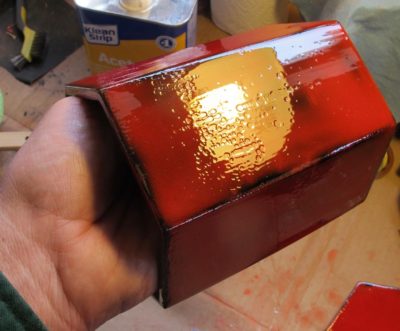
As some of you know I have been striving to replicate urushi techniques with West System marine epoxy, using resin 105 with catalyst 205. My results to this point have been very encouraging. I ran into a problem today that I hope someone will know the solution.
Up to this point I was sailing along using pigments and dyes in the layers of epoxy to render the painted finish I desired, and abraded between each application with dry 3M Tri-m-ite (white) silicon carbide paper. No problem.
The final (?) coating of clear epoxy was applied today, and I got catastrophic cissing (or beading-up) of the coating. There was no contamination of the surface that I know of. I was punctilious with my work and preparations. I always use a clean unwaxed paper cup to mix, a clean tongue depressor to stir, and a clean brush that is dedicated to this task and always cleaned repeatedly with acetone after every use.
The only thing different this time was that I had switched to 3M Tri-M-ite 600 wet or dry silicon carbide paper, the black stuff, for the final coat preparations. I used water as the lubricant, wiped the surface with a new lint-free blue paper towel, followed by another wiping with another clean towel soaked with acetone to degrease the surface. And yet, the beading renders the surface a failure. Given this as the only variable, I’m thinking it pretty much has to the place to start looking for the source of the problem.
Anybody see anything obviously wrong?
As you know if you follow this blog, I do not post much of anything about the news of the day. The closest I come is to ridicule the buffoons and kleptocrats from the political class we have chosen to foster. What you do not know is that my friend, colleague, and protege Daniela is a native Ecuadoran, and that her husband’s parents are Ecuadoran. The worst of the earthquake damage was in the coastal town where she was a little girl. In addition, my dear friend and colleague of many decades DVR is married to a native Ecuadoran, so I feel strongly connected.
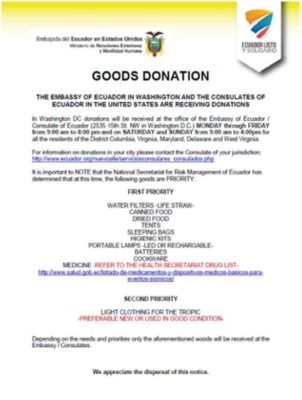
With that in mind I ask you to be attentive and prayerful in considering the immediate needs of the people of Ecuador in the aftermath of the massive earthquake there. This letter from the Ecuadoran Embassy is indicative of those needs, and if you can contribute I urge you to do so.
My nephew Martin just returned from Ecuador, and apparently met the President who was presumably offering his gratitude to the rescue-and-recovery and salvage workers there.
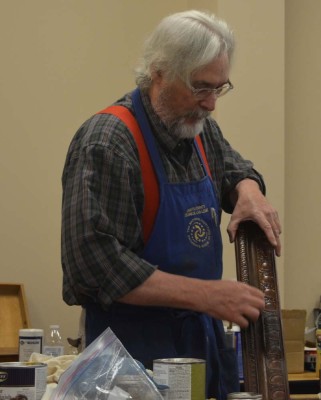
April 30-May 1. “Historic Finishes” Saturday Presentation and Sunday Workshop, Cumberland Furniture Guild, Nashville.
May 18 (tentative ) “Custom Blend Paste Wax: Make It Your Own Darned Self” for the Professional Refinisher’s Group meeting in Nashville. Demonstration.
June 20-22. “Historic Finishes,” hands-on workshop at The Barn. ***note date change***
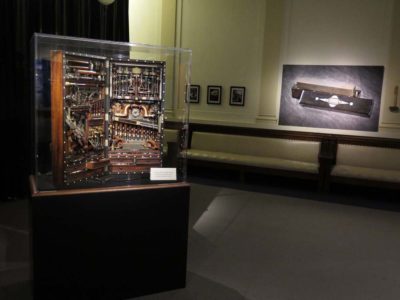
July 10. “The HO Studley Tool Cabinet and Workbench,” presentation to PATINA, McLean VA.

July 25-29. “Workbench Building Workshop,” week-long hands-on workshop at The Barn. Participants can make either a laminated Roubo workbench or a Nicholson style workbench.

August 19-21. “Replicating Roubo’s Parquetry,” three-day hands-on workshop at The Barn.
If any of these events interest you, drop me a line here or click on the links.
My burgeoning commitment to pursue oriental urushi lacquerwork techniques (without the lacquer as I am exceedingly allergic to urushiol which serves as the foundation for true lacquerwork; NB urushiol is the toxin in poison ivy and poison sumac sap) has been spurred with the recent arrival of two additions to the library.
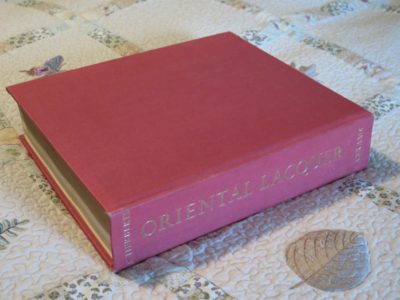
The first to show up on my doorstep was 10 pounds worth of Kurt Herberts’ long out-of-print 1960’s opus Oriental Lacquer: Art and Technique.

The book contains hundreds of illustrations of lacquer artworks going back many centuries, which was fine but not the real point for me. I already have several excellent picture books about lacquerwork artifacts. What I really wanted was the immense presentation of technique and technology of the artist and material. You see, from a materials science perspective it was absolutely critical that I understand the properties of the real deal in order to replicate most convincingly. My long time friend Joe Amaral has been attempting to persuade me to try real urushi at which he is becoming impressively facile. Ditto my recent email pen pal Wiebke Pandikow, a jeweler working in Finland who served an internship with a lacquer studio in Japan. But their efforts are likely to remain fruitless. I am just too concerned about the severe allergic reactions.
This led me to correspondence with my old acquaintance, renowned lacquer conservator and scholar Marianne Webb. One of my great regrets is that I did not buy her great book Lacquer: Technology and conservation. I was asleep at the switch, and now copies of that book are out of my price range and I am stuck with a photocopy. Anyhow, Marianne recommended wholeheartedly the boxed set Urushi No Waza by Gunther Heckmann, and translated from the original 2002 German edition.
Holy cow!
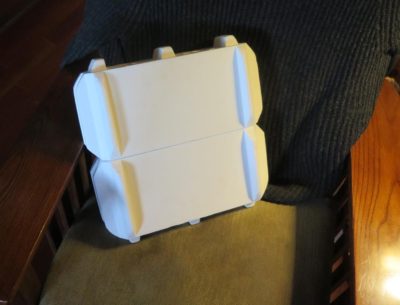
Several weeks after ordering a package arrived. I had never before received a book packed like high-value electronics.
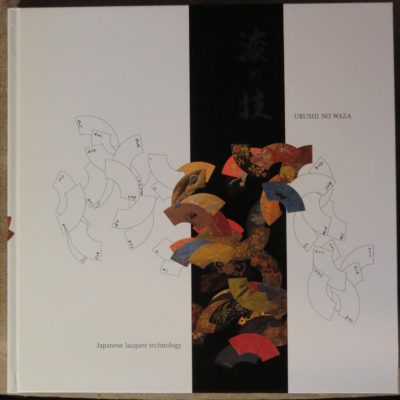
It is nothing short of sublime; wall-to-wall materials science as art! I am still working my way through it the first time, but it is almost certainly a book that will become a fully integrated reference for future artistic endeavors. A foot square and between on and two inches thick, accompanied by reference materials this is a treat for the artistic impulse. Tools, materials, techniques, analysis, and conservation are all under one roof here.
Wowser.

On Saturday we drove to Virgilina, Virginia (so named because it is astride the Virginia-North Carolina border) and attended the Regional Chapter meeting of the Mid-West Tool Collector’s Association.
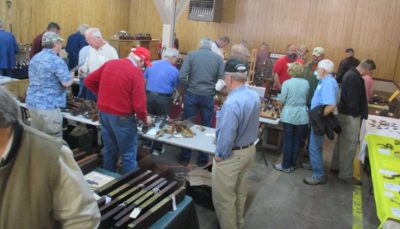
As is the usual regimen at such events the orders of business were 1) tool hawking and swapping, and 2) a presentation by a guest speaker. On the first point I managed to buy only one tool, a nicely fashioned mahogany chamfering plane, a form I had long wanted to add to my kit as I have a series of tables and cabinets that will require one.

As to the second point, Virgilina resident Barry Thompson presented the tool kit he uses for making Windsor chairs, of which he has fabricated and sold about 1,500 over the past twenty years or so. Barry is an affable, no-nonsense sorta guy who emphasized the nature and pace of work when what happens at the bench is how you derive your income.
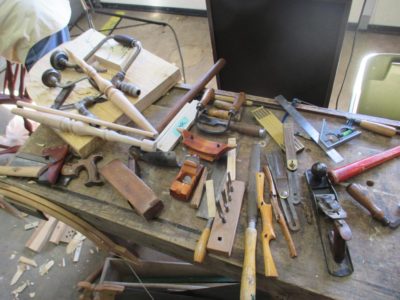
I was very much impressed with Barry’s talk, ans look forward to learning more about his work. While lunch was getting ready we chatted at great length about tools and chairmaking.
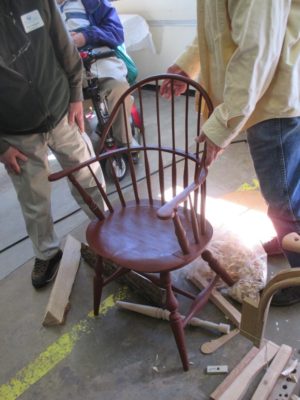
If you have any interest in tools of all sorts, and if you are reading this I would guess that you are, make sure to join and participate in the meetings of MWTCA.
It wasn’t enough that JimM fabricated a spectacular tool cabinet in homage to Henry Studley, but like Studley he also fabricated a number of tools for the inventory. JimM even fabricated tools that Studley was able to purchase, like the St. Johnsbury bevels, but otherwise stuck mostly to making replicas of tools Studley made like the marking gauges and rosewood-handled bench chisels.

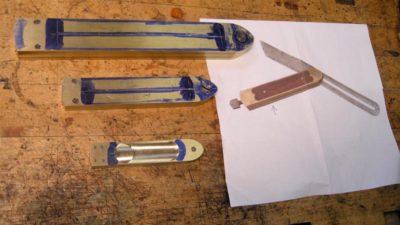
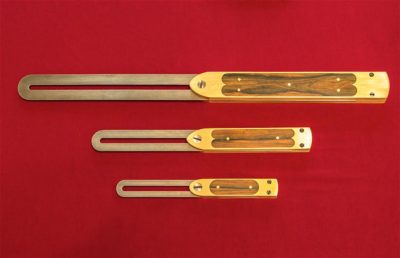

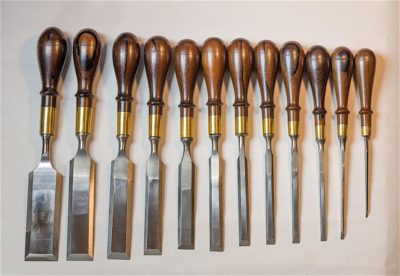
On a related note, I forwarded the pictures Jim had sent me of this project to Mister Stewart, wo promptly contacted JimM and invited him to visit the original in person later this year. I feel like a matchmaker.
In two weekends I’ll be presenting for the Cumberland Furniture Guild in Nashville.
Here’s the flyer for the event. Hope to see you there.
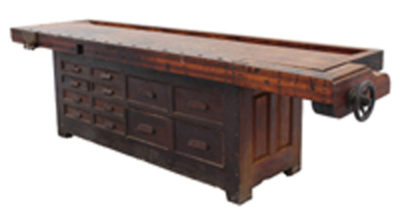
Just in case you have a spare $5-10k laying around you can acquire this spectacular piano maker’s bench at Martin Donnelly’s summer auction.
I will be there but only to examine and document this. It’s way out of my price range.
I have rarely been afflicted by the phenomenon of “buyer’s remorse.” It could be because I am such a skilled and thoughtful acquisitor, but it is more likely that I am 1) indifferent for the most part, and 2) able to learn from my mistakes. Except for that much-used 4WD F250 back in 1991. I am much more likely to regret not buying something than buying something.
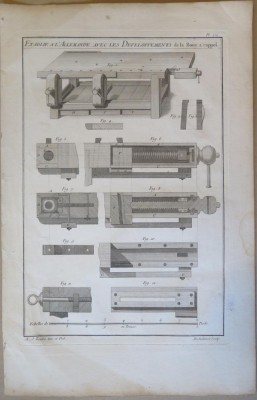
This week is an instance where I celebrate the purchase of something that I went after good and hard. My long time bud MartinO emailed me with information about the sale of two two piles of prints that were possibly from a First Edition of L’Art du Menuisier Volume III that had been sliced up.
I immediately contacted the seller and she confirmed that the paper was right (laid linen paper ranging from abut 100 to 140 pound weight) and the engraving plate marks were clearly evident.
So I bought them.
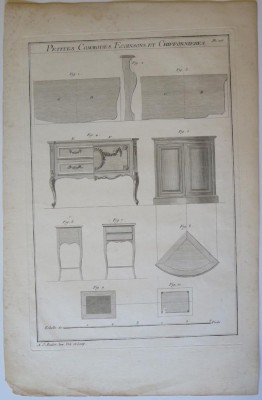
The “hand made-ness” of this print couldn’t be clearer; the paper was not placed on the engraving plate squarely so the print was out of whack with the page. Roubo must have been getting a croissant then.

When I got them home I was able to examine them more closely and confirm that they appear to be the real deal. While the act of slicing up vintage bound volumes is barbaric, at least something wonderful was the result. Had it not been for this act of vandalism I would have never been able to acquire (read: afford) these wonderful hand-made prints that were almost certainly produced under the watchful oversight of Roubo himself.
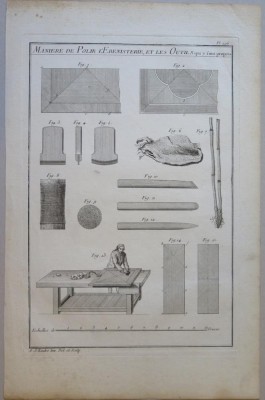
It is unlikely that I will keep all of them, but there are those that will remain my own treasures until they scatter my ashes on the mountainside. Imagine the thrill of inventorying these and finding the single print that lit the spark for me more than thirty years ago! Yes indeed, in the inventory was a print of Plate 296 in absolutely perfect condition. Along with it were a number of the prints from the parquetry sections that will hang alongside 296 on the walls of the cabin.
As for the rest of my newly purchase Roubo prints I have not yet decided. A select few will be gifted to my Roubo collaborators and others, but it is possible I will simply sell the rest. Since I have access to the digital files from when Chris Schwarz had his First Edition scanned I do not need them for research and informational purposes, but still they are The Real Thing. Like I said, I just have not decided.
Stay tuned.
































Recent Comments